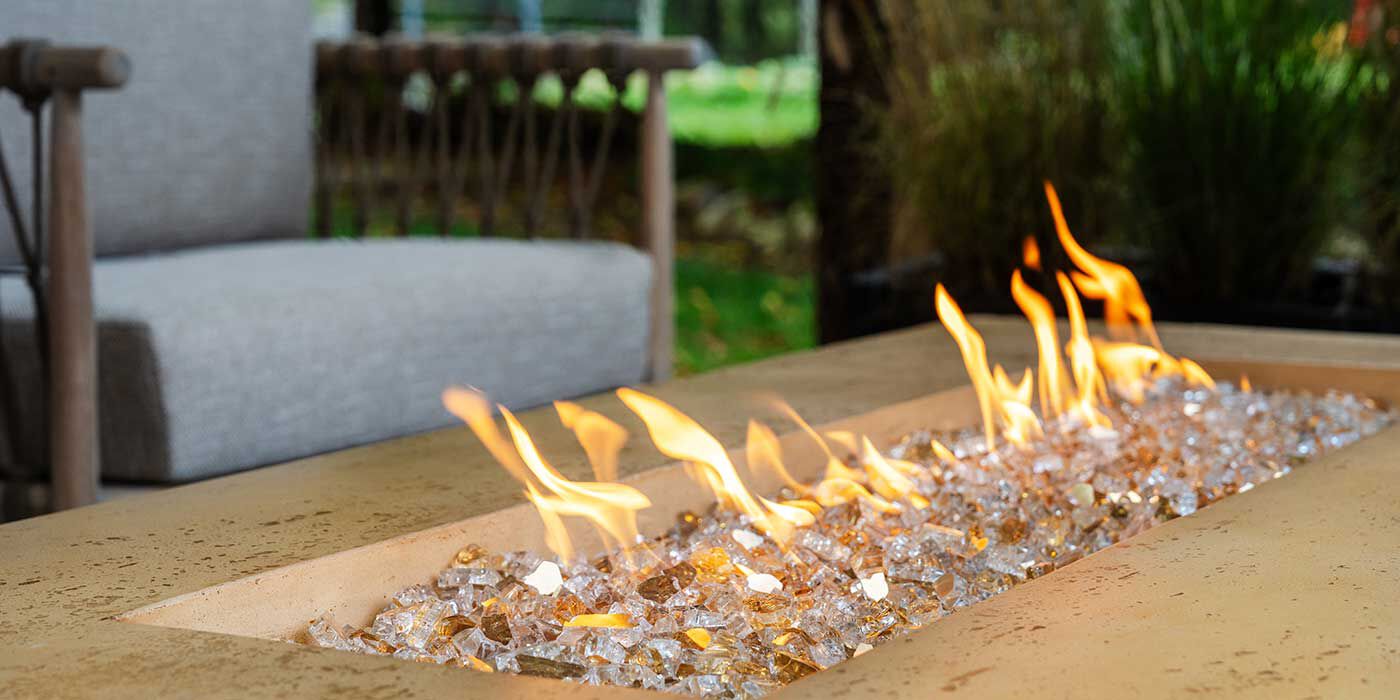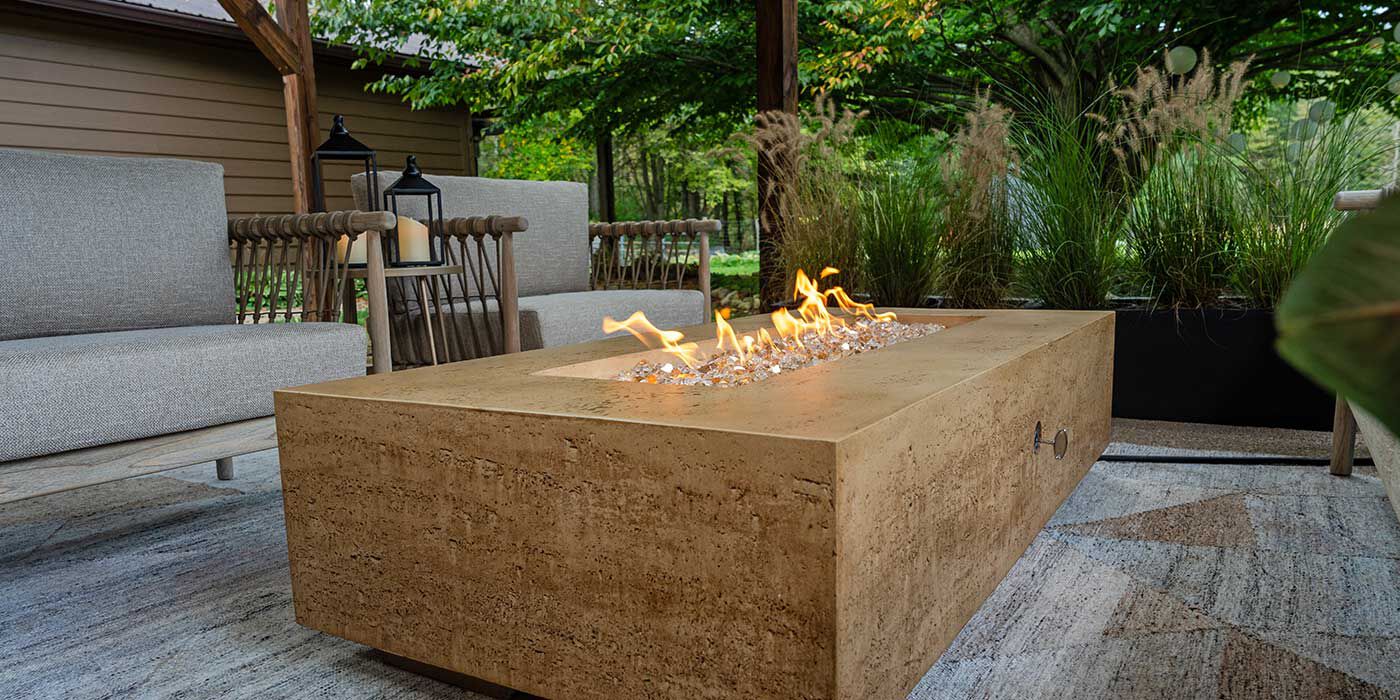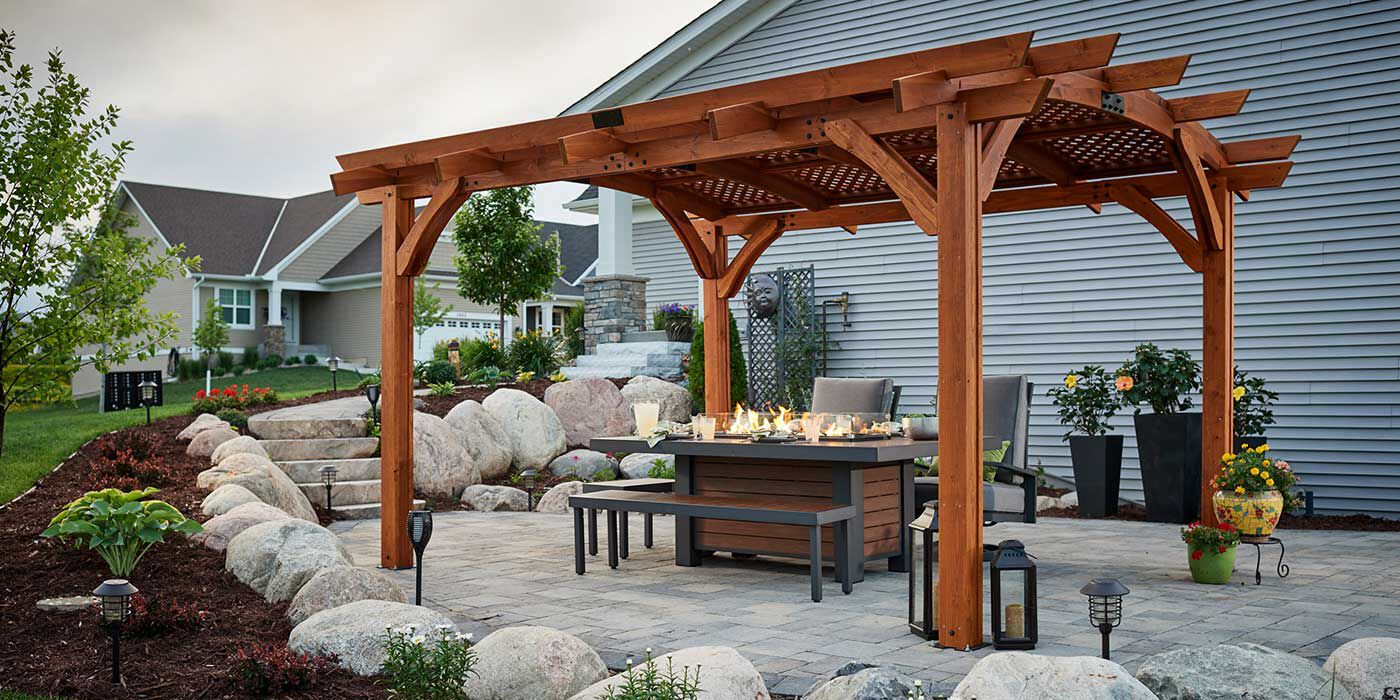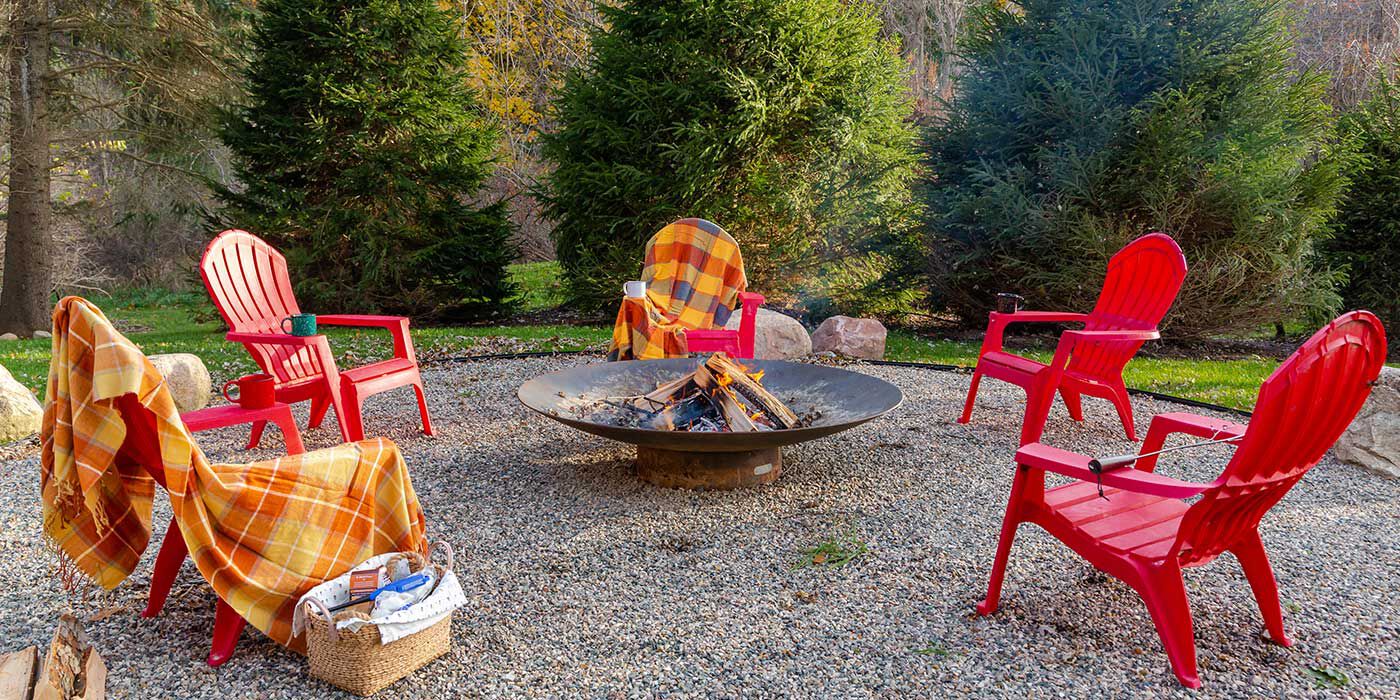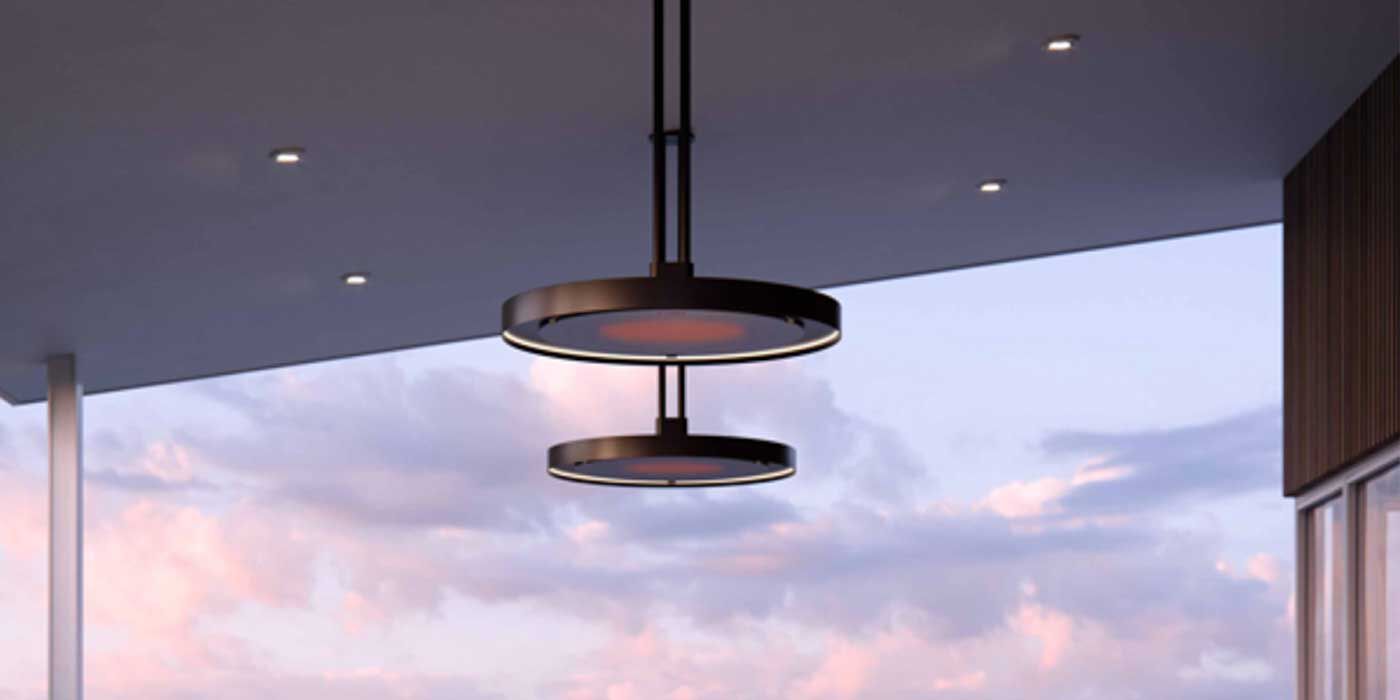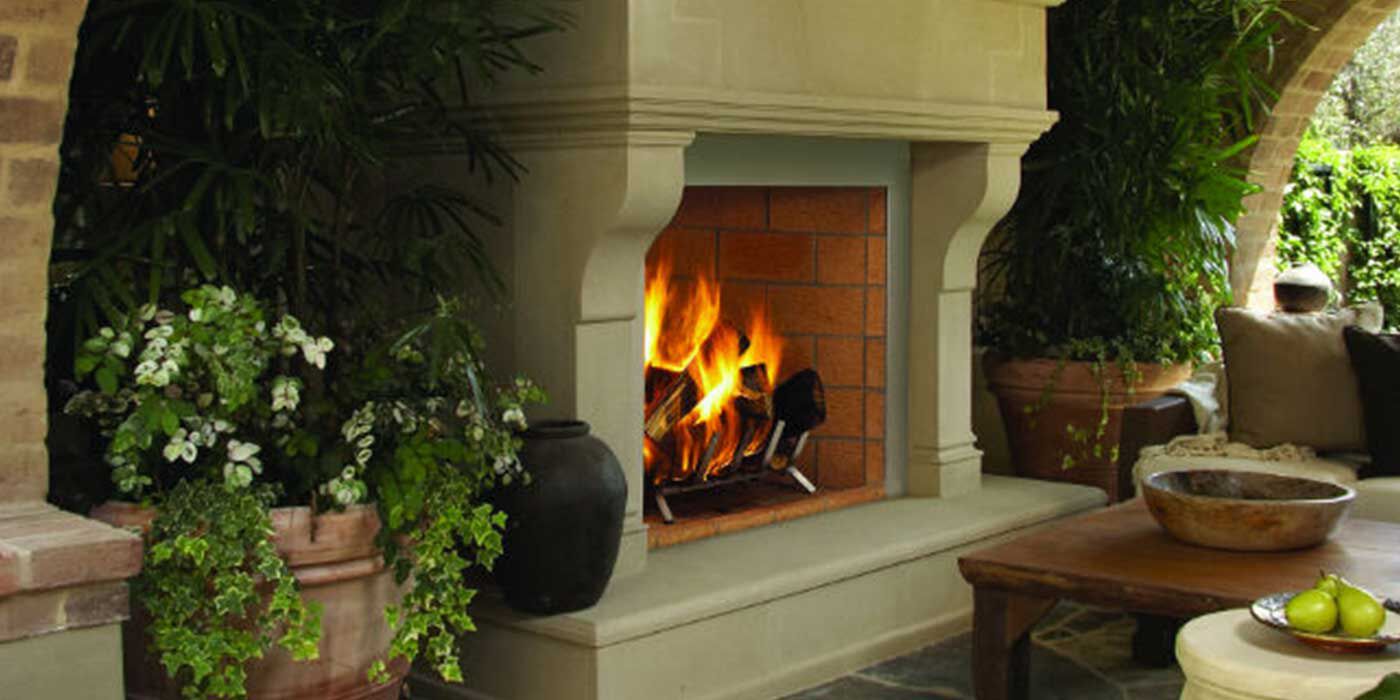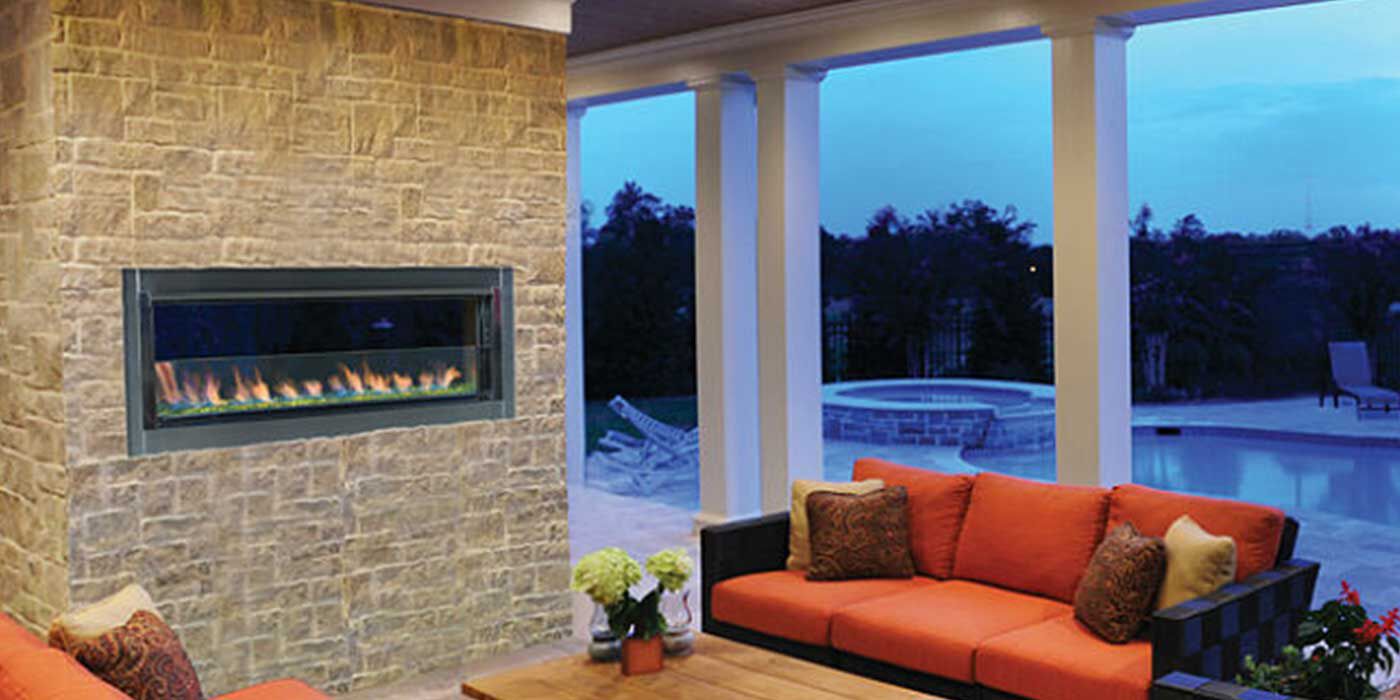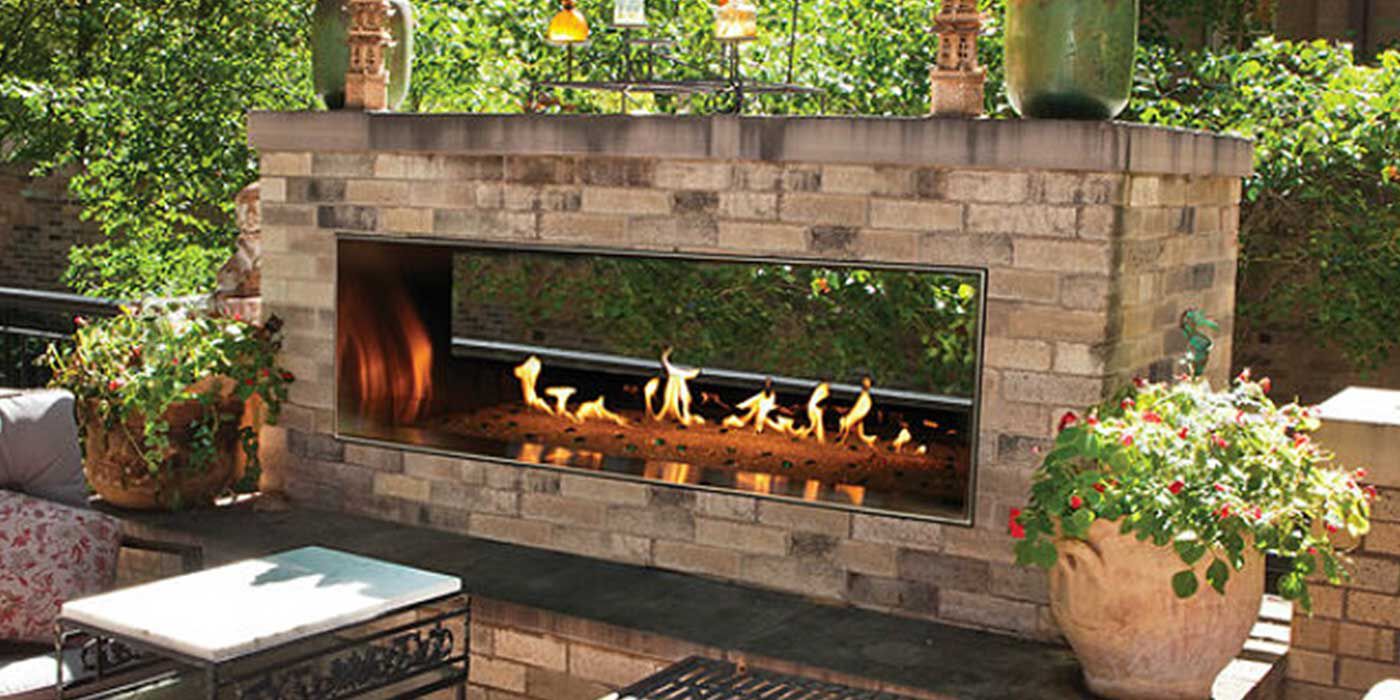By: Garrett Jamieson, NFI Certified Master Hearth Professional
Last Updated: March 3, 2025
Adding a fire pit to your patio allows you to relax outside year-round without worrying about the weather. But what if your patio is covered?
The good news is that many outdoor fire pit designs can be safely installed under a covered space. However, there are a few safety considerations you'll need to make before you buy one.
Follow this guide to determine what fire pit style works best for your space, what size you should get, and the best installation locations.
Ceiling Height
First, you need to determine if the ceiling on your covered patio is high enough to house a fire pit underneath. Heat from the fire will rise, leading to extensive damage to the ceiling over time, and potentially a fire if it's too close.
Check the minimum height clearance requirements outlined in the installation manual that comes with your fire pit. You'll also need to read up on your city's local fire codes and regulations to make sure it's safe to put a fire pit under your covered patio.
Ventilation
You should never use a fire pit in an enclosed space. Fires need adequate ventilation, otherwise toxic fumes, like carbon monoxide, and smoke will build up quickly.
To determine how open your space needs to be, check the ventilation requirements in your installation manual. Additionally, check your local codes and regulations.
Location
It’s important to keep your fire pit a safe distance away from anything that could easily catch fire, like plants, patio furniture, and decor. Make sure your outdoor living space is open, clear, and free of low-hanging trees, plants, and other flammable materials.
Double-check your installation manual to see exactly how much clearance you'll need around each side of your fire pit.
Flooring
Finally, you need to consider the type of flooring you have on your patio. Strong, noncombustible materials like stone, brick, and concrete flooring are the safest options for your fire pit.
If you have a wood deck, you can still enjoy a fire pit. However, you must place it on top of a noncombustible surface. The same goes for vinyl and composite flooring, which are both flammable materials. Most homeowners use a concrete slab or paver underneath their fire pits.
Pro Tip:
Always use a fire pit in an open space with plenty of air flow and never in an enclosed space. Fire pits must receive proper ventilation, otherwise toxic fumes and gases can build up.
Types of Fire Pits
Wood Burning
You cannot use a wood burning fire pit under a covered patio. Wood produces thick, toxic smoke and if there’s not enough air flow, it can build up quickly and deplete the space of oxygen.
Wood fires also produce sparks and embers, which can fly out and ignite any combustible materials close by. They require open areas with plenty of ventilation, away from combustible materials.
Gas
You can install a gas fire pit under your covered patio, as long as it is pre-approved by your city. Gas fire pits are safer than wood models because they’re smokeless and won’t create any sparks, embers, or ash. However, they still have clearance requirements.
Make sure you confirm the ceiling height, ventilation, location, and flooring of your patio meet the manufacturer's requirements outlined in your fire pit owner’s manual.
We also recommend purchasing a fire extinguisher for your outdoor space, just in case of an emergency.
Safest Options for Your Covered Patio
The safest options to bring ambiance and warmth to your covered patio are patio heaters and outdoor fireplaces. Both come in a variety of shapes, styles, and fuel type to fit your needs.
Patio Heaters
If your priority is to add heat to your outdoor space, patio heaters are the best option. They're available in a wide range of sizes to fit your outdoor space, along with gas and electric models.
You can mount an electric patio heater to the wall or recess it into the ceiling of your structure. They're completely safe to use in an enclosed patio and won't cause any fire hazards.
Some models are approved for both indoor and outdoor spaces, such as the Bromic Eclipse Smart-Heat Pendant Electric Patio Heater.
Gas patio heaters come in wall-mounted and free-standing designs. If you're looking for a permanent solution, consider installing a Natural Gas heater. If you'd like to move the heat around your space, Propane patio heaters are a better option.
Propane heaters are more portable and often come with convenient wheeled bases, so you can direct the warmth wherever you need it.
Keep in mind, gas patio heaters still require ventilation and have clearance requirements. Look through your gas patio heater installation manual to determine how open your space should be.
Another huge benefit of patio heaters is user-friendly operation. Most heaters come with remote controls. Other models have modern smart controls, so you can pair a device to your heater and operate it through an app.
Outdoor Masonry Fireplaces
Traditional outdoor masonry fireplaces provide the same cozy, rustic ambiance as wood burning fire pits with less fire hazards. You can create your own custom fireplace or install a factory-built wood burning fireplace.
Superior's Outdoor Wood Burning Fireplace is a great addition to any outdoor patio in need of some extra warmth. The fully insulated firebox keeps your patio warm and toasty in even the coldest of climates.
Since wood burning fireplaces produce smoke, they require a manufacturer-approved chimney for proper ventilation.
You'll also need to monitor the fire as it burns and make sure it's completely extinguished when you're done using your fireplace.
Outdoor Gas Fireplaces
Outdoor gas fireplaces are much more efficient than wood burning styles and provide more radiant heat overall.
For example, this linear gas fireplace by Superior is a great fit for any outdoor setting. It has adjustable flames and an electronic ignition with a battery backup.
You won't necessarily need a chimney for your gas fireplace, making installation a breeze. Ventless gas fireplaces don't require any kind of venting. You can also install them in combustible walls, giving you the freedom to use custom finishing materials.
Gas fireplaces are much easier to control and maintain than wood burning fireplaces. Most models come with a wall switch or a remote control, so you can easily turn them on and off. Some high-end gas fireplaces also come with remote controls and built-in smart controls.
Indoor/Outdoor See-Through Fireplaces
See-through fireplaces have a glass front and back, allowing you to view the fire from both sides. Think of see-through fireplaces as windows with fire in the middle.
You can find standalone units or install your see-through fireplace in an exterior wall of your house. This lets you enjoy the ambiance and heat from both inside and outside your home.
Quick Recap
Before installing any type of fire pit under your covered patio:
- Prioritize fire pit safety! Make sure you research local regulations regarding fire pits.
- Pick out some fire pit designs you like.
- Check each fire pit’s manufacturer requirements.
- Narrow your wish list down until you’ve found the best option for your space.
- If you can't install a fire pit under your covered patio, pergola, or screened porch, consider patio heaters and outdoor fireplaces.
Prefer to Listen?
We're Here to Help
Have any questions about installing a fire pit under your covered patio? Contact our NFI Certified specialists at (800) 919-1904 today!
More Resources
Read the six things you need to consider before installing a fire pit on your deck.
Browse our unique fire pit designs to gain inspiration for your space.
Explore these swoon-worthy outdoor spaces to inspire your next project.
 |
Garrett Jamieson has been a Technical Sales Representative at Woodland Direct for over a decade. As an NFI-Certified Master Hearth Professional, he's well versed in fire products and safety standards. He strives to help clients understand product features and best installation practices, so they can find products that fit their home and lifestyle. Outside of work, Garrett spends most of his time outside, riding bikes, bowling, camping, grilling, chopping wood, and tackling DIY projects with his family. Call him or one of our experts in fire at 800.919.1904. |
